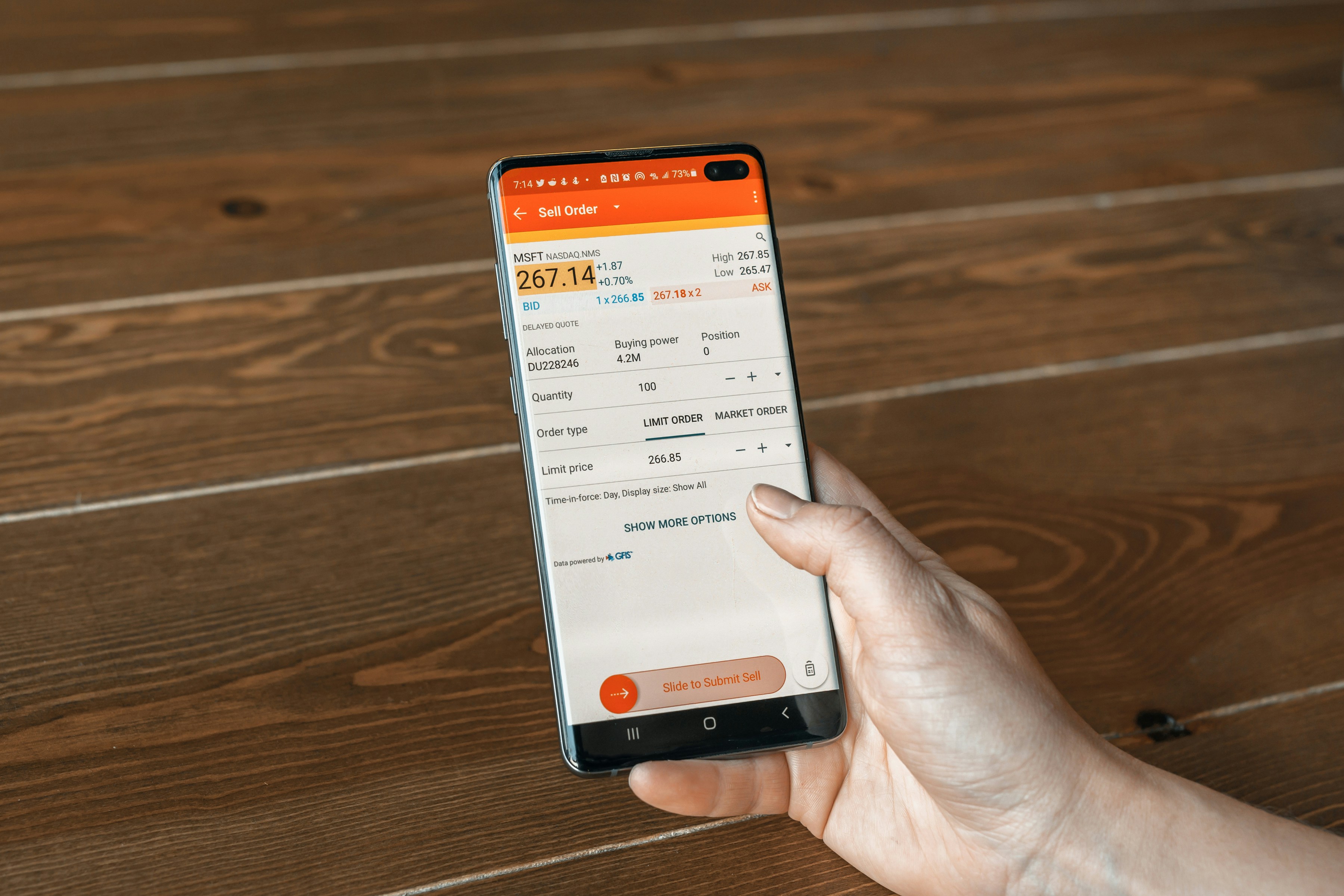
Infosys’ Buyback
In a significant announcement that has captured the attention of investors and market analysts alike, Infosys Ltd., one of India’s leading IT services companies, has declared an ambitious buyback program worth ₹18,000 crores. This substantial financial maneuver is poised to impact shareholders positively and reflects the company’s robust performance amidst the current economic landscape. A share buyback, or stock repurchase, occurs when a company buys back its own shares from the market, reducing the number of outstanding shares. By doing so, the company aims to enhance shareholder value, often leading to an increase in earnings per share.
The rationale behind such a strategic approach can be manifold. Primarily, buybacks signal to the market that the company believes its shares are undervalued, projecting confidence in its long-term performance. Additionally, a buyback can serve to return excess cash to shareholders, providing them with an immediate benefit as they may choose to sell their shares back at a premium. This tactic is particularly prevalent in the tech sector, where companies often generate substantial cash reserves due to strong revenue streams and profit margins.
Moreover, with a rapidly evolving market, technology firms must maneuver adeptly to maintain investor confidence and capitalize on growth opportunities. The decision by Infosys to embark on this buyback journey exemplifies its commitment to maximizing shareholder returns while navigating through fluctuating market dynamics. By utilizing part of its cash reserves for this buyback, Infosys aims to balance its growth initiatives with shareholder profitability. As the market anticipates the effects of this buyback, stakeholders will be keen to observe how it influences share prices and overall corporate strategy moving forward.
Understanding Buyback Mechanisms
Buyback mechanisms are fundamental strategies employed by companies to repurchase their own shares from the market, which can have significant implications for shareholders. Companies may choose various methods for buyback, each with its distinct operational processes and potential impacts. The primary types include tender offers, open market purchases, and direct negotiations.
A tender offer is a public proposal that invites shareholders to sell their shares back to the company at a predetermined price, typically at a premium over the current market price. This method is often viewed favorably by shareholders, as it provides a clear exit strategy at an attractive valuation. In contrast, open market purchases allow companies to buy back shares directly from the primary stock exchange over time. This method enables flexibility and discretion, as the company can decide how many shares to buy back and when, without triggering significant market reactions.
Direct negotiations, while less common, involve a company negotiating with specific shareholders to repurchase their shares. This can facilitate targeted buybacks and is often used to manage investor relations more personally. Each of these methods bears implications for shareholders, affecting the company’s stock value, earnings per share, and overall market perception.
In the case of Infosys, the chosen buyback mechanism plays a crucial role in determining how shareholders will benefit from their strategic decisions. The ability to select an approach that aligns with their financial objectives reflects the company’s commitment to enhancing shareholder value. Understanding these mechanisms equips investors with the knowledge to make informed decisions regarding their holdings in the company.
Impact on Shareholder Value
The recent announcement of Infosys’ ₹18,000-crore share buyback program is poised to have a significant impact on shareholder value, enhancing the overall investment appeal of the company. One of the most immediate effects of a buyback is the improvement in earnings per share (EPS). When a company repurchases its own shares, the total number of shares outstanding decreases. As a result, even if net income remains constant, the EPS will increase, reflecting a more attractive financial health. This ratio serves as a crucial indicator for investors assessing a company’s profitability.
Furthermore, a share buyback often signals management’s confidence in the company’s future. By committing substantial funds to buy back shares, the management indicates its favorable long-term outlook on financial performance and growth prospects. This act can instill greater confidence among investors, potentially leading to positive buzz in the marketplace. Enhanced trust can translate into investor loyalty and increased demand for the company’s stock, further driving up share prices.
The potential for share price appreciation is another critical factor at play. As demand for shares increases following a buyback announcement, market dynamics typically lead to an upward pressure on the stock price. This appreciation not only rewards current shareholders but can also attract new investors, expanding the shareholder base. Consequently, as Infosys executes its buyback, we may observe a favorable shift in its overall market valuation. This can solidify the position of the company as a strong player in the market, enhancing its reputation and competitive edge.
Historical Context of Infosys Buybacks
Buybacks have become a prominent tool for companies looking to return cash to shareholders while simultaneously reducing the number of outstanding shares. Infosys, a leading player in the IT sector, has engaged in several stock buyback programs over the years, emphasizing its commitment to shareholder value. The historical context of these buyback initiatives is essential for understanding the current ₹18,000-Cr buyback, as it reflects the company’s strategy and performance in managing its capital structure.
Since its inception as a public company in the late 1990s, Infosys has undertaken multiple buyback exercises. The first significant buyback occurred in 2000, where the firm repurchased shares worth approximately ₹1,000 crore, which corresponded to roughly 2.5% of its outstanding equity. This initial effort demonstrated Infosys’ willingness to utilize its cash reserves to bolster shareholder confidence during challenging market conditions.
In subsequent years, the company continued to adopt buyback programs, with a notable initiative in 2017, where it announced a buyback worth ₹13,000 crore. Analysts viewed this move as a response to a negative market perception due to a mix of increasing competitive pressures and shifting investor sentiment. The 2017 buyback saw robust participation from shareholders, signaling their support for the company’s long-term strategy and commitment to enhancing shareholder returns.
Comparing these historical buybacks with the current proposal, a trend emerges: Infosys’ management consistently seeks to optimize capital distribution while ensuring the sustainability of its financial health. Each buyback has been accompanied by shifts in the broader IT landscape, highlighting how the company navigates varying economic environments. This historical perspective informs shareholders on expected outcomes and influences investor sentiment for the latest buyback initiative.
Financial Health of Infosys: A Buyer Perspective
Infosys, one of the leading players in the global IT services sector, has showcased robust financial health leading up to its recent ₹18,000-crore buyback announcement. A critical assessment of its financial indicators reveals a company bolstered by substantial cash reserves, a consistent trajectory of revenue growth, and commendable profit margins. These elements are central to understanding the strategic rationale behind the buyback initiative.
The company’s cash reserves are a standout factor, with Infosys reporting nearly ₹30,000 crore in liquid assets as of the latest fiscal quarter. This positions the firm not only to manage operational expenses but also to utilize its substantial cash position for strategic initiatives like share repurchase. Utilizing these reserves effectively illustrates the company’s commitment to enhancing shareholder value, especially in an environment where cashless transactions and liquidity management are paramount for sustained growth.
In terms of revenue, Infosys’ growth has remained steady, with year-on-year increases reflecting its adept ability to adapt to changing markets and harness new technology trends. For instance, the company reported a revenue growth of approximately 10% in the last financial year, driven by strong demand for digital services and cloud solutions. This trajectory underscores the company’s resilience and its strategic positioning within the industry, assuring shareholders of long-term viability.
Moreover, Infosys has maintained an impressive profit margin, which stands around 22%, placing it among the top performers in the sector. Such high profitability not only demonstrates operational efficiency but also reflects prudent cost management strategies. Maintaining these margins enables the company to reinvest in innovation while also affording the opportunity to return capital to shareholders through buybacks.
By examining these financial metrics, it is clear that Infosys is in a strong position to undertake a sizeable buyback, ultimately aimed at delivering value to its shareholders. The blend of significant cash reserves, steady revenue growth, and healthy profit margins paints a picture of a financially sound entity poised for sustained success in the competitive landscape.
Market Reactions and Predictions Post-Buyback
The announcement of Infosys’ ₹18,000-crore buyback plan has generated considerable interest within the investment community, leading to varied market reactions and predictions about the stock’s performance. Analysts and financial experts widely anticipate that the short-term volatility surrounding the buyback announcement will lead to fluctuations in the share price. Such volatility may stem from speculations as investors weigh the implications of the buyback alongside broader market conditions. Historically, buybacks have been known to exert upward pressure on stock prices, as they signal confidence from a company’s management in its future prospects and are often perceived as a move to enhance shareholder value.
Investment analysts suggest that in the initial phase, the stock may experience increased trading activity as market participants react to the buyback news. Some investors might look to capitalize on temporary price dips or peaks, contributing to enhanced volatility. For context, when companies announce large buybacks, they often see a surge in purchases from institutional and retail investors alike, which can lead to heightened trading volumes. However, it is also important to recognize that the sincerity behind buyback announcements and the underlying financial health of the company will heavily influence investor sentiment and reactions.
Looking beyond short-term fluctuations, many analysts predict that the long-term benefits of the buyback could be substantial for shareholders. By reducing the number of outstanding shares, Infosys may enhance earnings per share (EPS), which can signal sustained financial growth. Furthermore, the commitment to return cash to shareholders reflects prudent capital allocation strategies, potentially improving investor confidence. As such, market reactions may stabilize over time, allowing for a renewed focus on fundamental performance metrics, making the buyback a catalyst for sustained shareholder value enhancement in the future.
Alternatives to Buybacks: What Shareholders Should Consider
When organizations like Infosys announce substantial buyback programs, it often prompts shareholders to reflect on the implications of such decisions. While buybacks can be beneficial, they are not the only avenue available for companies with surplus cash. Shareholders should consider various alternatives that may also enhance their value in different ways.
One popular alternative is the payment of dividends. Dividends provide shareholders with direct cash returns, which can be particularly appealing for investors seeking regular income. Unlike buybacks, which can fundamentally alter the share price and the company’s capital structure, dividends offer immediate tangible benefits. Furthermore, consistent dividend payments can signal a company’s strong financial health and commitment to returning value to shareholders.
Another consideration for companies with excess cash is reinvestment in growth opportunities. This could involve funding new projects, investing in research and development, or enhancing existing operations. By directing surplus funds toward growth, companies can potentially increase future revenue streams, thereby benefiting shareholders in the long run. However, this alternative also comes with risks, as the success of these investments is not guaranteed.
Acquisitions present yet another alternative. With sufficient capital, companies can strategically acquire other firms to bolster their market position, expand product lines, or enter new markets. Successful acquisitions can lead to significant long-term advantages and increased shareholder value. However, mergers and acquisitions are complex processes that may require thorough due diligence to avoid pitfalls that could diminish shareholder returns.
In conclusion, while buybacks are an effective means for companies like Infosys to return value to shareholders, it is essential for investors to weigh the various alternatives available. Options such as dividends, reinvestment in growth, and acquisitions should also be considered, as each carries its unique benefits and risks that could shape the company’s future and ultimately impact shareholders positively.
Risks Associated with Buybacks
While share buybacks, such as those undertaken by Infosys, are often celebrated for their potential to enhance shareholder value, they are not without risks and drawbacks. One significant concern is the possible misallocation of capital. Companies may opt to repurchase shares instead of investing in projects that could foster long-term growth and innovation. Such decisions run the risk of prioritizing short-term stock price boosts over sustainable business strategies, ultimately limiting future opportunities for expansion and development.
Moreover, market perception issues can arise from buyback programs. Investors may interpret a company’s decision to buy back shares as an admission that management lacks profitable investment avenues. This can lead to skepticism about the company’s future growth potential, affecting investor confidence and stock valuations. In some cases, buybacks may even signal a reliance on financial engineering rather than genuine operational success, which can create turbulence in stock performance over time.
Additionally, buybacks can foster a dependence on stock performance as a metric of success. Companies may feel pressured to continue repurchasing shares to uphold stock prices amid rigorous investor expectations. This pressure can divert focus from fundamental operational improvements, which are critical for long-term stability. Furthermore, in adverse market conditions or economic downturns, companies that have heavily relied on buybacks may find their financial health compromised, as they have limited resources for navigating challenges.
In the context of Infosys’ buyback, it is essential for investors to weigh these risks carefully. Buybacks may provide immediate gains, but they can also mask deeper issues related to a company’s growth strategies and financial management. Understanding these dynamics enables shareholders to make informed decisions regarding their investments and the potential implications of buyback programs.
Conclusion: The Path Forward for Shareholders
The implementation of Infosys’ ₹18,000 crore buyback program presents a multifaceted opportunity for shareholders. Throughout this discussion, the potential benefits of the buyback have been underscored, including the immediate enhancement of earnings per share and a likely increase in share price due to reduced supply in the market. These advantages pave the way for improved shareholder value, particularly for those whose investments hinge on long-term growth trajectories.
Furthermore, the buyback initiative fosters a robust signal from the management regarding the company’s financial health and future prospects. By opting for a buyback, Infosys demonstrates confidence in its operational capabilities and revenue generation, signifying a proactive approach to managing capital. This can instill greater investor faith in the firm’s stability, particularly during volatile market conditions. While the buyback may not be devoid of risks—such as the potential for short-term operational restrictions and decreased cash reserves for reinvestment—it provides a strategic avenue for fueling shareholder returns.
As the buyback progresses, it is crucial for shareholders to remain vigilant and informed about any developments arising from the company’s strategy. This is especially pertinent as market conditions adapt, and Infosys recalibrates its operational focus. Engaging with available information will empower shareholders to make informed decisions regarding their portfolio strategies post-buyback. Ultimately, while the buyback initiative embodies a significant opportunity, it also necessitates critical assessment and strategic planning for long-term investment success. Staying abreast of corporate actions and market trends will be critical as shareholders chart their path forward in the evolving landscape distilling from Infosys’ buyback strategy.



















+ There are no comments
Add yours